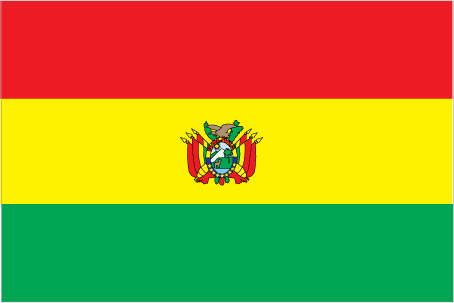To help inspire or plan your trip to Bolivia, some of its major attractions
for travellers are shown below, including some of the best natural, historical, cultural and adventure sites in the country.
These include all of UNESCO World Heritage Sites for Bolivia which represent the best
of the world's cultural and natural heritage.
Click on the icons below to focus on specific types of features
(click again to return to all).
|
|
|
|
|
|
|
|
|
|
|
|
 |
|---|---|---|---|---|---|---|---|---|---|---|---|
| Natural | History | Wildlife | Trekking | Cities | Religious Monument | Boat Journey | Rail Journey | Diving | Cultural | Adrenaline | UNESCO WHS |
Cities of interest in Bolivia
| La Paz | |
|---|---|
La Paz is the administrative capital of Bolivia and at 3,600 metres is the highest capital city in the world. La Paz is nestled in a steep canyon on the Bolivian Altiplano, underneath the peak of Mount Illimani. La Paz was founded in the 16th century due to a nearby discovery of gold deposits and although the gold boom didn't last, its strategic location along the silver route ensured its prosperity. La Paz is characterised by spacious plazas, cobblestone streets and narrow alleyways, with its colourful markets being a major attraction. With a large indigenous population, the markets of interest include the Witches' Market selling potions and incantations made from herbs, seeds and other products, the Carnaval market selling colourful costumes and numerous shops selling ponchos, gloves and hats made from alpaca wool. Buildings of note in La Paz include the Palacio Legislatico, the San Francisco Cathedral and the Museo National del Arte. | |
| Potosí | |
|---|---|
The biggest silver lodes in the Americas were discovered in Cerro de Potosi, the mountain overlooking the city, in 1542 and the site soon became the world's largest industrial complex, producing more than half of the silver found in the continent. The silver production made the town one of the wealthiest in Latin America and fuelled the Spanish economy for almost 300 years. The human cost was horrific however, with an estimated 8 million people (indigenous and African slaves) dying in the mines. It's possible to visit the mines today, still used to extract tin, but it is an uncomfortable and distressing, though enlightening experience. Conditions for the miners are still difficult but are now much fairer as it is run as a co-operative. The silver wealth ensured that Potosi was one of the most beautiful colonial cities in the Americas and much of that heritage still exists today. The highest city in the world at 4,090 metres, Potosi has some grand colonial architecture and numerous ornate Baroque churches. Buildings of note include the Church of San Lorenzo, the Convent of Santa Teresa and the Casa de la Moneda, the original 18th century royal mint which is now a museum. UNESCO World Heritage Site: City of Potosí | |
| Historic City of Sucre | |
|---|---|
The colonial city of Sucre was founded in 1538 as La Plata and was the first capital of Bolivia. The city's name was changed to Chuquisaca in 1776 and later to Sucre in honour of the general who fought for Bolivian independence. The House of Freedom is Sucre is one of the country's most important historical monuments, where many of the keys events in the independence struggle took place. Today Sucre is the cultural and education centre of Bolivia, with a host of historic buildings and museums. Its 16th-century religious buildings include San Lázaro, San Francisco and Santo Domingo while the Cathedral contains the jewel encrusted ‘Virgen do Guadalupe’ by Bernardo Britti. The colonial ambience and student culture make Sucre a great city to explore and enjoy while the surrounding countryside is ideal for hiking, mountain biking and horse riding. UNESCO World Heritage Site: Historic City of Sucre | |




